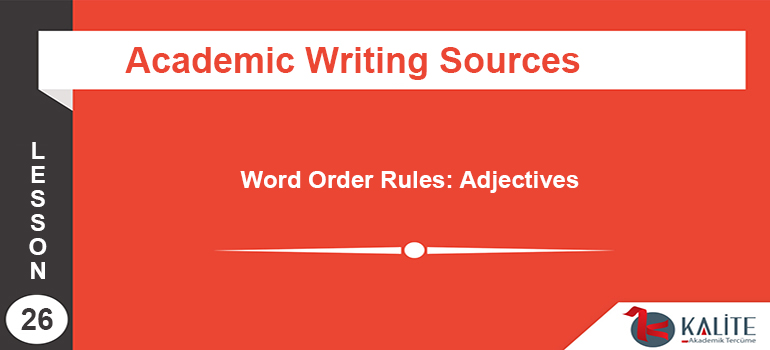
Word Order Rules: Adjectives
We don’t account for adjectives in the article Adverbials (except with the linking verb, where a subject compliment functions as an adjective) because they always accompany nouns and tend not to move around sentences much.
Order of adjectives in a string of adjectives is governed by an order that feels intuitive for native English speakers, but is difficult to unpack for speakers not raised in the language.
| Example: A string of adjectives usually appears in the following order |
| Determiner (e.g. a, the, his, Jimmy’s, the house’s, four, ninety, few, several) |
| General opinion—could be used for almost any noun (e.g. great, poor, excellent) |
| Specific opinion—use limited to a narrower range (e.g. sensual, frustrating, challenging) |
| Description (e.g. blue, tall, rough, old, Dutch) |
Additionally, descriptive adjectives are usually given in the following order: size, shape, age, colour, nationality, and material.
Thus, usually we would say “one frustrating, short, fat, four-year-old, spotted hound” and not “one short, four-year-old, frustrating, fat, spotted hound.” If you can’t think of a good reason to deviate from this ordering, don’t deviate.
The rule for ordering adjectives is not set, however; use these as a guide, but also be aware that writers frequently break these rules when it seems to them the wisest decision.
| Example: Adjectives tend to appear before nouns |
| The tall four-year-old hound… |
| Example: Some adjectives also follow linking verbs |
| The hound was beautiful |
| Example: Adjectives usually follow pronouns |
| They made him happy |


